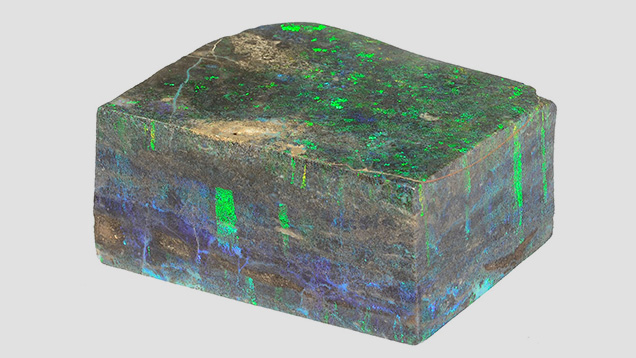Large Oolitic Opal Block


Figure 2. Numerous brown spheres scattered throughout precious opal were seen in this very large block of oolitic opal from Andamooka, Australia. Photomicrograph by Nathan Renfro, courtesy of Tibor Shelley/Opals by GMT; field of view 17 mm.
Upon initial observation, the semi-translucent to opaque opal appeared similar to typical matrix-type opal from Andamooka that is routinely treated black. Microscopic examination, however, revealed an interesting and unique texture rarely seen in Andamooka opal. The stone was composed of numerous dark spherical inclusions, known as “ooids,” with precious opal filling in the pore spaces between the spheres (figure 2). This type of opal has been previously reported (see Summer 1982 Lab Notes, p. 104; Winter 1984 Lab Notes, p. 229; and Spring 1986 Lab Notes, p. 50), but this example is especially rare due to its large size. Although an example of treated black oolitic opal has also been previously reported (Spring 1983 Lab Notes, p. 46), microscopic examination revealed that the overall gray bodycolor of this extremely large opal was due to the high density of dark ooids scattered throughout the block. There were also some light brown patches that appeared to be a sandstone type of matrix, as well as numerous veins and pockets of precious opal that did not contain ooids.This unusual piece of natural-color oolitic opal is the largest of its type that GIA has examined to date.



